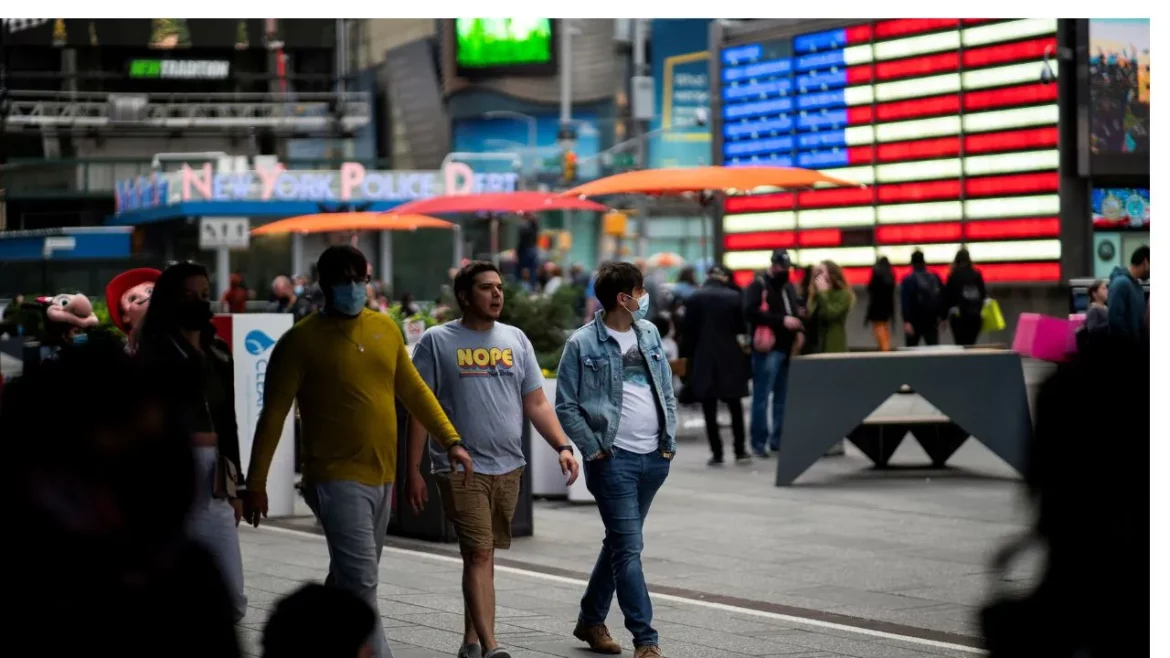The world has been struggling with a new strain of coronavirus, known as COVID-19, since it emerged in Wuhan, China, in December 2019.
The disease is causing significant social and economic disruption. It has impacted everything from education to healthcare and daily routines.
COVID-19
Worldcoronaviras are a family of respiratory viruses that cause illness from the common cold to more severe diseases. In early 2020, a new coronavirus was discovered and quickly spread around the world. It’s called COVID-19.
The CDC and our partners are working with countries to stop the spread of COVID-19 and strengthen global biosecurity infrastructure. Sign up to learn more, and be the first to hear about research advancements, health tips and current news on this outbreak.
Like other coronaviruses, COVID-19 can change through mutation, which means new strains of the virus are likely to develop over time. These changes can make a virus easier to spread and more dangerous.
Fortunately, a vaccine can protect you from getting sick with COVID-19 and reduce your risk of complications. This is especially important for people with certain underlying medical conditions.
If you have an underlying condition that raises your risk for COVID-19, talk to your health care provider about being fully vaccinated. This is recommended for everyone, including children and older adults.
Infection with COVID-19 can cause a range of symptoms from mild to serious illness and even death. Some symptoms include fever, cough, sore throat, headache, body aches, and vomiting.
More serious symptoms can include pneumonia, bronchitis, and liver disease. They are more common in people who have underlying medical conditions, such as heart and lung disease, or those who have a weak immune system.
The most common way to catch COVID-19 is through person-to-person contact, where you come into contact with the virus through respiratory droplets (droplets that float in the air when an infected person coughs or sneezes). Other ways to catch the virus are by touching surfaces that have been touched by an infected person and then touching your eyes, nose, or mouth.
Symptoms of COVID-19 can start up to 14 days after you are exposed, but may occur earlier or later than that. Symptoms of COVID-19 can be mild or severe, and they can include fever, aches and pains, and diarrhea. Some people with COVID-19 develop pneumonia and other serious illnesses that can lead to death.
Symptoms
Coronaviruses are a family of viruses that cause illness ranging from the common cold to more serious diseases. In late 2019, a new coronavirus called SARS-CoV-2 emerged in China and has since spread worldwide.
The new virus causes a respiratory disease that can range from mild to severe, and can even be life-threatening. It can be passed from person to person through airborne droplets when someone coughs, sneezes, or talks near infected people.
People who have COVID-19 don’t usually need treatment, though it can be helpful for those who have a high risk of getting sick (like older adults or children with medical conditions). They get better with rest, fluids, and fever-reducing medicines.
Symptoms of COVID-19 vary from person to person and can include coughing, fever, nausea, shortness of breath, runny nose, and muscle and joint pain. Some people may also have a rash, belly pain, vomiting, diarrhea, and heart problems.
In children, COVID-19 can sometimes lead to an inflammatory syndrome that looks like toxic shock or Kawasaki disease. Doctors call this pediatric multisystem inflammatory syndrome (PMIS). It can also be dangerous if it gets worse, but most kids recover with no long-term health problems.
It can also cause a serious infection of the heart (myocarditis). Most children who have this type of infection go on to have normal hearts, but it can be dangerous and lead to permanent damage in some cases.
You can help prevent infections by keeping your hands clean. Wash them often with soap and water or use hand sanitizer that contains at least 60% alcohol. Don’t touch your eyes or nose unless you’ve just washed them. Avoid crowded indoor places and open windows to bring in outdoor air when possible.
Some people with milder illnesses can be treated with antiviral medicines from the NHS, which are usually taken orally. Others will need to travel to a day clinic at a hospital to receive a medicine through an intravenous infusion (drip in the arm).
If you have COVID-19 or have been in contact with someone who has it, you should stay at home and isolate yourself until you feel well. You may need to stay in isolation for longer if you have other medical conditions or live in a place where there are lots of other people with the virus.
Origins
Many different viruses cause colds and other mild respiratory (nose, throat, lung) illnesses in people. Some of these viruses also infect animals. However, SARS-CoV-2, the coronavirus that causes COVID-19, is a new strain of virus that has never been seen before in humans.
Since the emergence of COVID-19, scientists and health officials have been trying to find out where the virus originated. The answer is important because it can help scientists better understand how viruses spread to different animals and people. It can also help experts figure out how to prevent the spread of future outbreaks.
One of the most difficult questions is how the virus first spread to humans. The virus is able to infect humans when they touch surfaces or objects that have been contaminated with the virus. This can include touching the eyes or mouth, or using a hands-on object like a doorknob.
Several studies have traced the earliest cases to a seafood and animal market in Wuhan, China. However, these sources are not conclusive and other factors may play a role.
In July 2020, the World Health Organization (WHO) sent a mission to Wuhan to try to identify how the virus started spreading. The group wanted to look at wild-animal markets in and around Wuhan, as well as farms that supply those markets.
The team included virologists, epidemiologists, and other experts. It reported that it was unlikely that the virus could have escaped from a laboratory in Wuhan and that it had likely come from wild-animal markets.
But the WHO’s mission report failed to fully engage with China, a key ally of the United States and a country that is increasingly bitter about the pandemic. Chinese officials rejected a number of the WHO’s plans, particularly a proposal to investigate lab breaches.
Despite this, the WHO still believes there is a strong case for investigating how COVID-19 spread outside of the lab. That is why it has urged governments to carry out a full investigation into the virus’s origins.
Now, an international team of researchers is trying to analyze previously unavailable genetic data that suggests the virus may have originated in animals rather than a lab. They found that some samples collected at a market near where the first human cases of COVID-19 were detected had genetic material from raccoon dogs. Other scientists have not verified this analysis, but it is the strongest evidence yet to suggest that the virus came from animals instead of a lab.
Transmission
A new type of coronavirus that causes COVID-19 emerged in China in late 2019 and quickly spread to other parts of the world. The virus is similar to the one that caused severe acute respiratory syndrome (SARS) in 2002-2003 but it has become more contagious and deadly.
It is unclear how the virus spreads from animals to humans, known as zoonotic transmission. Some researchers say it may have come from bats, while others think it was produced in a laboratory and escaped into the air. Other scientists believe it could have come from a wild animal, such as a pangolin.
Regardless of the source, there is evidence that this new coronavirus has already travelled to more than 175 countries. The World Health Organization says it is a public health emergency of international concern.
The virus can be spread by direct person-to-person contact through coughs, sneezes, or other respiratory secretions. It can also be picked up by droplets that contaminate surfaces or objects. Infection can also occur when a person touches their hands with infected droplets or other contaminated objects and then touches their eyes, nose, or mouth.
Although there are many different routes of infection, the most common way is through direct person-to-person respiratory contact. This can happen through coughing, sneezing, or talking with someone who has been infected.
Other possible ways of getting the virus include sneezing into or coming into contact with an object that has been contaminated with it, such as a mask or gloves. These droplets can be blown up into the air, where they can infect people nearby.
Infection can also be spread through airborne transmission when people breathe in or inhale the virus from a sick person. This is the most common way to get the virus but it can be very dangerous for those with weakened immune systems or allergies.
Several studies have examined the risk of environmental contamination in hospitals and other settings where people are exposed to the virus. These studies found that the virus could survive on some surfaces, such as plastic and wood, for six to nine days without disinfection. However, simulated sunlight has been shown to inactivate the virus within minutes. These findings suggest that the amount of time a coronavirus survives on a surface depends on the temperature, humidity, and size of the inoculum.

